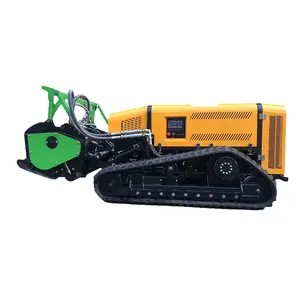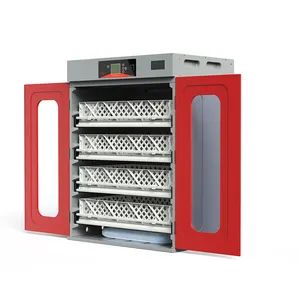Popular in your industry












































































Related Searches:






















































































































































Top categories
About sand blast with water
Introduction
Surface cleaning, a practice as old as civilization itself, has seen significant evolution over the centuries. From the use of wine and vinegar by the ancient Egyptians to the application of modern chemicals, the quest for effective and safe disinfectants continues. Among the various techniques, sandblasting has emerged as a versatile and effective method. However, it's not without its drawbacks. Enter the innovative approach of wet blasting, a method that combines the abrasive power of sandblasting with the fluid dynamics of water, promising a cleaner, faster, and more efficient solution to surface cleaning. This article delves into the evolution of surface cleaning, the mechanism and pros and cons of sandblasting, and the transformative potential of wet blasting.
The Evolution of Surface Cleaning
Surface cleaning has a rich history, dating back to ancient times when Egyptians used wine or vinegar for cleaning. Over centuries, various chemicals like Sulphur and Mercury were used for detoxification and purification. The discovery of microorganisms by Antonie Van Leuwenhook in 1675 revolutionized the understanding of cleaning, leading to the use of chemicals to kill these organisms. Phenols, Quaternary Ammonium Compounds, and Bleach are some of the significant advancements in this field. However, the quest for effective and safe disinfectants continues.
Introduction to Sand Blasting
Sandblasting is the act of propelling abrasive particles, such as sand, against a hard surface to alter its characteristics. This process uses high pressure to accelerate these particles to speeds that can erode materials at a microscopic level. Sandblasting is commonly used to clean and prepare surfaces, remove paint, or create decorative effects. There are several methods under the umbrella of sandblasting, including abrasive blasting and glass bead blasting, each having its unique applications and effects.
Pros and Cons of Sand Blasting
Sandblasting is a versatile technique with several advantages, including its effectiveness for paint removal. If you're planning to repaint a structure, the old paint can be efficiently stripped away through sandblasting. However, like any process, sandblasting also has its disadvantages. These pros and cons are essential to consider when choosing the right surface cleaning method.
Innovative Approach: Wet Blasting
Wet Blasting, also known as hydroblasting, is a forward-thinking development in surface cleaning technology. It's a cleaner, faster, more effective, and efficient method than traditional sand blasting. This innovative approach uses a wet-slurry liquid abrasive technology that is completely closed-loop, making it sustainable. It's versatile, capable of removing oily scale and corrosion as well as etching precision textured finishes. Wet Blasting is also dirt-free, sand-free, dust-free, and hassle-free, making it a revolutionary solution for abrasive blast-finishing needs.
How Wet Blasting Works
Wet blasting involves the use of a pressurized mixture of abrasive and water to clean and finish surfaces. Unlike sandblasting, a wet blast cabinet relies on a pump housed in the machine's bottom, called the hopper. The pump serves two purposes: agitation and slurry supply. It creates the perfect mixture of water and abrasive, also known as slurry. This mixture is sent to the blast gun, where it meets with compressed air and is directed towards the part. After the abrasive hits the part, it may re-enter the hopper and continue the blasting cycle.
Benefits of Wet Blasting
Wet blasting offers several benefits. Firstly, it significantly reduces dust production, protecting both operators and sensitive equipment from abrasive particulates. Secondly, the presence of water increases the mass at the point of impact, potentially requiring less abrasive. Thirdly, wet blasting can simultaneously strip and clean surfaces, eliminating the need for a separate rinsing process. Lastly, it reduces the risk of static charges and subsequent explosions, as it creates 'cold' sparks, effectively removing static.
Applications of Wet Blasting
Wet blasting has a wide range of applications. It is used for restoring surfaces such as factory floors, pavement, building façades, and the insides of tanks. The high-pressure hot water is very effective at removing grease, oil, and other stubborn substances. It’s also an ideal technique for removing graffiti and rust, and boring pipes. This method is perfect for cleaning and maintaining both indoor and outdoor surfaces.
Industrial Applications
Wet blasting is a powerful technique used in various industrial applications. It's effective in restoring surfaces such as factory floors, building façades, and the insides of tanks. High-pressure hot water is particularly efficient at removing stubborn substances like grease and oil. It's also an ideal method for removing graffiti, rust, and boring pipes. This technique is gaining popularity due to its safety, speed, effectiveness, and ability to clean hard-to-reach areas without leaving any residue.
Domestic Applications
For most residential projects, wet blasting is recommended. When sandblasting in or around a home, it's advisable to use a dustless blaster with a proper containment system to protect people and their belongings. Wet blasting is less likely to damage surfaces and create dust that could be harmful to inhale.
Environmental and Safety Considerations
The environmental and safety considerations of surface cleaning methods are crucial. Sand blasting, while effective, can create dust or contaminated water, particularly when removing lead-based paint. This method also generates noise and vibration, potentially disturbing nearby workers. Water jetting, another technique, faces the challenge of removing contaminated water from the environment. The dry ice method, however, produces less waste due to the sublimation of CO2 pellets upon impact. Despite its higher CO2 emissions, it's cleaner, faster, and consumes less energy. The CO2 emissions could be mitigated by reclaiming CO2 from industrial processes.
Conclusion
The journey of surface cleaning has been a long one, from the rudimentary methods of the ancient world to the sophisticated techniques of today. Sandblasting, despite its effectiveness, has its limitations, particularly in terms of environmental impact and safety. The advent of wet blasting marks a significant leap forward in this field. Its benefits, such as reduced dust production, simultaneous stripping and cleaning, and the elimination of static charges, make it a promising solution for both industrial and domestic applications. However, as with any technology, it's crucial to consider its environmental and safety implications. As we continue to innovate, the goal remains the same: to achieve effective, efficient, and safe surface cleaning.


































